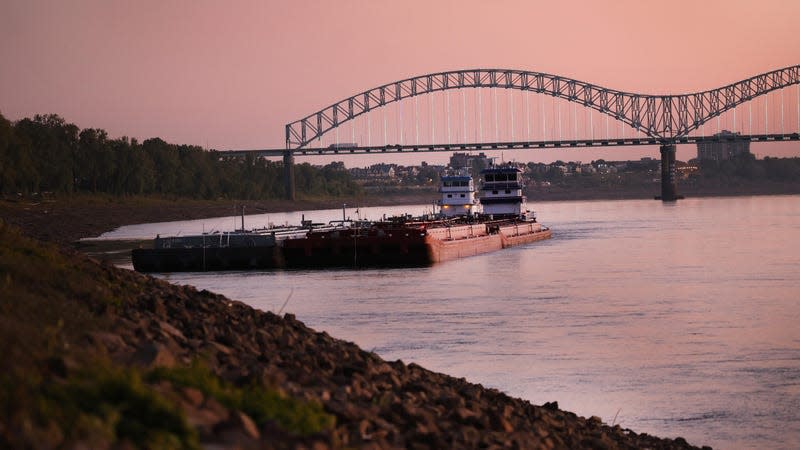Drought Along Mississippi River Adding to U.S. Inflation Woes

An intense drought through America’s heartland left 1,700 barges waiting for the Mississippi River to be dredged outside of Vicksburg, Mississippi, this week. The river is at its lowest levels in a decade, causing headaches for vital industries and communities that use the river as a major shipping route and source of drinking water.
The past few months have been some of the driest on record for communities in the Mississippi river basin, Washington Post recently reported. This month, the Army Corps of Engineers needed to repeatedly dredge different spots in the river in order to allow barge-hauling vessels to pass without running aground. Yearly dredging costs the federal government billions each year. Even after dredging, the vessels are carrying 25 percent fewer barges and those barges are carrying 20 percent less weight this year, CNN reports.
Read more
The 2022 Civic Si Sure Seems To Make More Power Than Honda Says
You Can Now Sleep In A Retired Semi Truck Trailer Tiny House
The combination of fewer barges per trip, and less cargo per barge, has cut the capacity of barges moving on the river by about 50% even before the recent river closures, said Mike Seyfert, CEO of the National Grain and Feed Association. And that has sent the rates that shippers are paying soaring.
“From what we hear from members, that has resulted in record levels of barge rates, and that’s being driven by the fact that there is limited traffic,” Seyfert said.
While traveling down Old Man River sounds like an old-timey profession, the Mississippi remains a critical artery of trade to this day. Around five percent of cargo moved inside the U.S. is done so on river barges. The form of transportation is especially important to agriculture. From the Washington Post:
The transportation industry says the intervention is needed to maintain a flow of exports that is central to the country’s agriculture industry. About 60 percent of U.S. corn and soybean exports move down the Mississippi, the Gulf Intracoastal Waterway and the Arkansas, Illinois, Ohio and Tennessee rivers, according to the U.S. Department of Agriculture.
“Commerce is moving, albeit very slowly,” said Deb Calhoun, a senior vice president for the Waterways Council, a transportation industry group. “Ultimately, we need rain, and lots of it.”
Drought is pronounced across much of the country west of the Mississippi, including some two-thirds of the northern Plains states that drain to the Missouri River and then the Mississippi, U.S. Drought Monitor data show.
Precipitation totals rank among the 15th driest that Oklahoma, Missouri, Kansas, Iowa and South Dakota have seen for June through September. It has been Nebraska’s third-driest recorded stretch of summer into fall, according to the National Centers for Environmental Information.
Such a drastic constriction in water flows across such a large area has translated to an unusually lasting impact on Mississippi River levels. The last time dry conditions had such an effect on the river was a decade ago.
A section of the river near Memphis, Tennessee is already at its third-lowest level to date, according to CNN. And with more dry weather predicted for the coming months, the problem will only get worse.
This drought is proving to be yet another broken link in the supply chain; the kind Americans have become quite familiar with over the last two years. COVID-19 lockdowns, historic rough seas in the Pacific, backups at ports due to a lack of workers due to poor working conditions and pay have all played a part in raising prices for everything from gas to food to cars.
More from Jalopnik
Sign up for Jalopnik's Newsletter. For the latest news, Facebook, Twitter and Instagram.

 Yahoo Autos
Yahoo Autos 